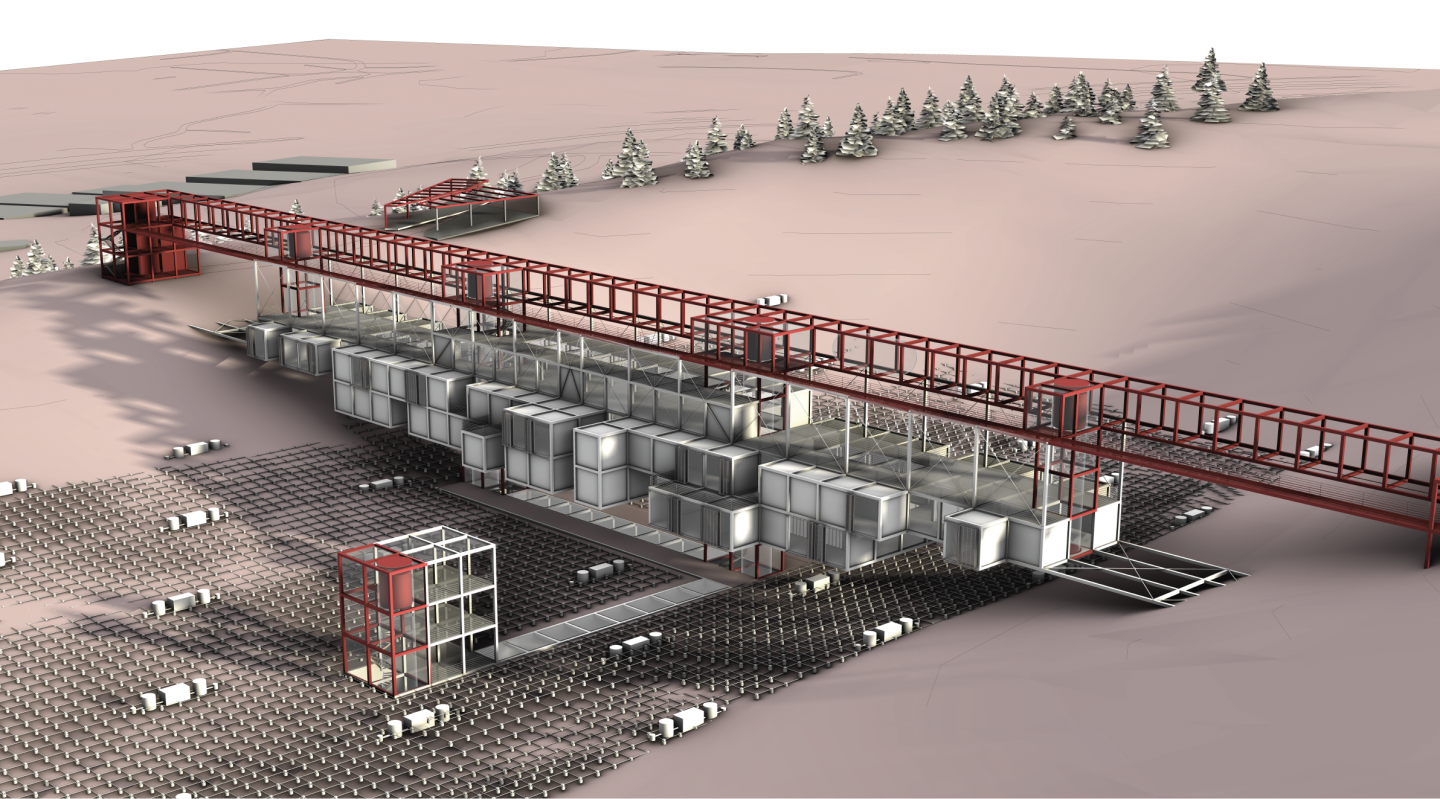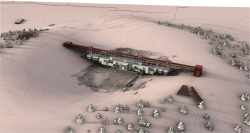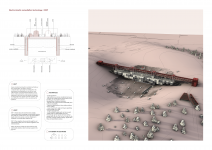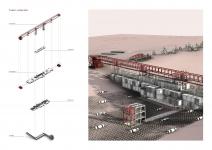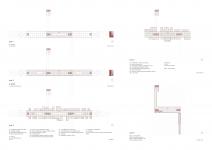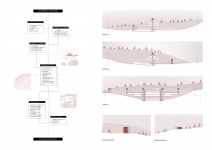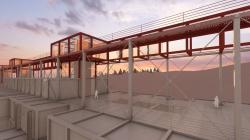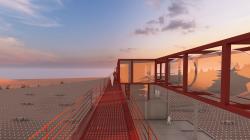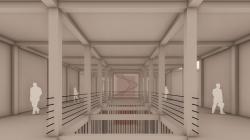The continuous increase in production and consumption capacity for centuries and the unlimited growth of cities have turned everything into a commodity in today’s world, as well as the earth on which we position ourselves, the space that is the essential expression of our existence, and the ground on which we build. The nature, soil, and earth we have brutally destroyed seem like ordinary resources humans can spend indiscriminately. So how long will this delusion last?
The Guzelbahce region of Izmir is one of the best examples of this situation that emerged as a result of human indifference. In this area, which was previously used as a mining area and is now used as a rubble dumping area, natural life has been ignored and destroyed.
In the face of this situation, my main goals were to rehabilitate the soil here, create consciousness and awareness in people and reconnect the gap in the context created by the excavation.
As a method of intervention to the soil, many factors such as the structure of the soil, the environment, past activities were examined and 'Electro-Kinetic Rehabilitation Technology (EKRT)' was found appropriate.
WHY?:
Heavy metals, deriving from industrial activities or from mining sites, are quite common contaminants, especially in industrial sites. The resulting soil contamination is one of the most critical forms of environmental pollution. Once heavy metals and their compounds have been dispersed in the soil, they may remain unaltered for long periods or migrate towards aquifers, thus spreading the pollution to other environmental matrices.
HOW?:
Step 1: Electrodes are immersed into suitably constructed wells containing an electrolytic solution. The wells are constructed so as to be permeable to liquids and ionic species, and are therefore in hydraulic communication with the soil.
Step 2: The migration of species through the soil substantially takes place via electromigration and electroosmosis.
Step 3: The heavy metals are removed from the electrolytic solution, which can be reused in the process.
ADVANTAGES:
- In-situ treatment
- High efficiency in terms of pollutant removal
- It does not require heavy interventions of soil handling, no excavations and/or transportation of polluted material
- High level of environmental sustainability and social acceptability
- Improved performance than similar solutions on the market
- Lower investment costs and lower operating costs (savings up to 50%)
- Simple management
- All the installed equipment can be re-used
- Wide range of applicability since the technology can be used to remove various metals as Zn, Pb, As, Cd, Co, Fe, Cr, Mn, Cu, Sn by simply varying applied voltage, application time and electrolytic solution.
2024
The structure consists of 5 main parts: Connector, Gatherer, Rehabilitator, Awakener, and Detailer.
The carrier steel structure defined as 'Connector', which connects the context by settling in the gap in the area, and the 4x4x4 meter modular steel units attached to this steel structure have been combined in a way that will meet the space needs and have become spatial.
In order to ensure the stability of the modules, the modules are fixed to each other and to the circulation cores descending from the Connector with steel detail solutions. In addition, the units are hung on the Connector with steel ropes and profiles and are stuck into the ground from both lateral axes.
'Gatherer' aims to bring all the people here together and to be united. 'Rehabilitator' is related to the process of the soil, is aimed at researchers and engineers, and includes laboratories and offices. 'Awakener' is for visitors, aims to awaken and raise awareness, includes simulation hub, information hubs, exhibition, workshop and study areas. 'Detailer' closely monitors the soil, observes and stores, is connected to the observation tower and sample collection slit.
After the rehabilitation works here are completed and the predicted recovery level is reached, the modular units will be removed from the Connector and sent to other rubble dumping areas as needed.
Designer: Sıla Azra Özdemir
Instructors: Ebru Yılmaz, Ülkü İnceköse, Ceren Ergüler
Favorited 9 times
